I have created a very simple test case to reproduce this issue.
I am trying to set a footer view programmatically to a tableview. Please note that I am referring to the footer at the very bottom of the tableview - NOT the section footer (most stack overflow answers confuse them).
Here's my very simple code:
- (void)viewDidLoad {
[super viewDidLoad];
UIView *footerContainer = [[UIView alloc] initWithFrame:CGRectZero];
footerContainer.backgroundColor=[UIColor greenColor];
footerContainer.translatesAutoresizingMaskIntoConstraints=NO;
[footerContainer addConstraints:@[[NSLayoutConstraint
constraintWithItem:footerContainer attribute:NSLayoutAttributeHeight relatedBy:NSLayoutRelationEqual
toItem:nil attribute:NSLayoutAttributeNotAnAttribute multiplier:1.0f constant:100
],
[NSLayoutConstraint
constraintWithItem:footerContainer attribute:NSLayoutAttributeWidth relatedBy:NSLayoutRelationEqual
toItem:nil attribute:NSLayoutAttributeNotAnAttribute multiplier:1.0f constant:[UIScreen mainScreen].bounds.size.width
]]];
self.mytableview.tableFooterView=footerContainer;
[self.view setNeedsLayout];
[self.view layoutIfNeeded];
}
- (NSInteger)tableView:(UITableView *)tableView numberOfRowsInSection:(NSInteger)section{
return 10;
}
- (UITableViewCell *)tableView:(UITableView *)tableView cellForRowAtIndexPath:(NSIndexPath *)indexPath{
UITableViewCell *cell = [tableView dequeueReusableCellWithIdentifier:@"cell"];
cell.textLabel.text=[NSString stringWithFormat:@"%ld",indexPath.row];
return cell;
}
However, the outcome looks like this:
As you notice, the footer shows on top of the tableview. Is this a bug or am I missing something?
If I change the tableFooterView to tableHeaderView, then it works fine. So I was expecting the same to work for footer too but it doesn't.

